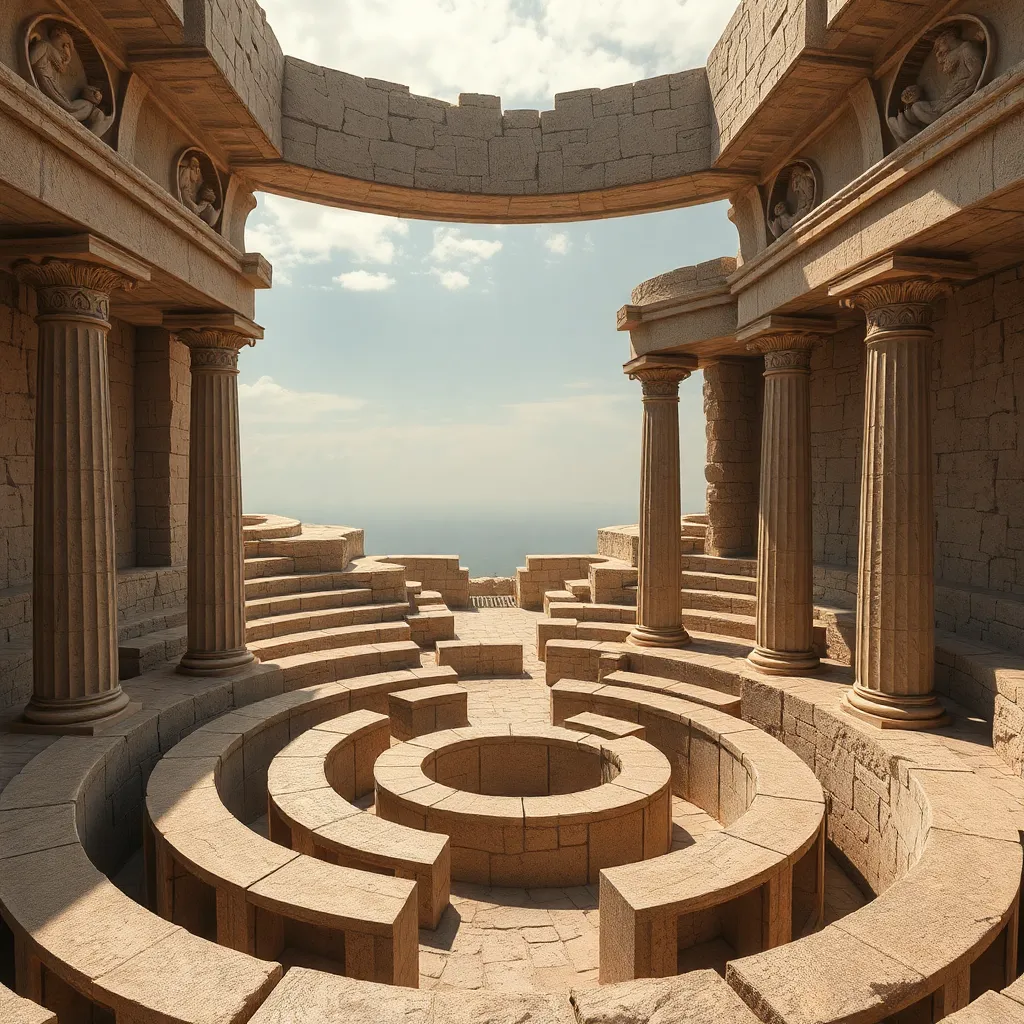Theseus and the Labyrinth: The Intersection of Myth and Architecture
I. Introduction
The myth of Theseus and the Minotaur is one of the most captivating tales in Greek mythology, intertwining themes of bravery, ingenuity, and the struggle against chaos. Theseus, the Athenian hero, ventures into the Labyrinth, a complex maze designed by the architect Daedalus, to confront the fearsome Minotaur—a creature that embodies the darkness lurking within the human psyche. The Labyrinth itself serves as a pivotal symbol, representing both physical and metaphorical journeys through complexity and confusion.
This article aims to explore the connections between mythology and architectural design, particularly focusing on the Labyrinth’s significance in both contexts. By examining the historical background, symbolism, and enduring legacy of this myth, we can better understand how ancient stories continue to influence modern architecture.
II. Historical Context of the Myth
The origins of the myth of Theseus and the Labyrinth are deeply rooted in the rich cultural tapestry of ancient Greece. The tale is primarily associated with Crete and the Minoan civilization, which flourished from approximately 2000 to 1400 BCE. The Minoans are credited with creating intricate palatial complexes, such as the Palace of Knossos, which some scholars believe inspired the concept of the Labyrinth.
In ancient Greek culture, mythology played a crucial role in explaining natural phenomena, human behavior, and societal values. The story of Theseus not only highlights the hero’s virtues but also serves as a cautionary tale about the consequences of hubris and the importance of wisdom in navigating life’s complexities.
III. The Labyrinth: Symbolism and Interpretation
The Labyrinth stands as a powerful symbol of complexity and confusion. It represents the multifaceted nature of human experience, where every turn may lead to unforeseen challenges or discoveries. In psychological and philosophical contexts, the Labyrinth can be interpreted as a metaphor for the journey of self-discovery, where individuals must confront their inner fears and uncertainties to emerge transformed.
Some interpretations of the Labyrinth include:
- A place of danger: The Minotaur symbolizes the monstrous aspects of the self, which must be faced and overcome.
- A journey of self-discovery: The path through the Labyrinth mirrors the complexities of human existence, encouraging introspection and growth.
IV. Architectural Representations of the Labyrinth
Throughout history, labyrinthine structures have appeared in various architectural forms. Ancient civilizations, including the Greeks and Romans, designed spaces that incorporated labyrinth-like elements, often for ceremonial or recreational purposes. The design principles behind these labyrinths include intricate pathways, deliberate disorientation, and the use of space to evoke a sense of wonder.
Notable historical examples of labyrinthine architecture include:
- The Palace of Knossos in Crete, with its complex layout and multi-level design.
- The Chartres Cathedral in France, which features a labyrinth on its floor, serving as a pilgrimage path.
In contemporary architecture, the influence of the myth can be seen in various modern designs that embrace labyrinthine elements, creating spaces that challenge perceptions and invite exploration.
V. The Role of Theseus as a Hero
Theseus embodies the archetype of the mythological hero, characterized by bravery, intelligence, and a commitment to justice. His journey through the Labyrinth is not merely a physical challenge; it represents the trials faced by individuals in their quest for truth and meaning. By confronting the Minotaur, Theseus not only saves the Athenian youth but also symbolizes the triumph of light over darkness, reason over chaos.
The significance of Theseus’s journey extends beyond the myth itself, influencing heroic narratives across literature and architecture. Theseus’s story serves as a blueprint for understanding the hero’s journey, which has resonated throughout centuries in storytelling and design.
VI. The Intersection of Myth and Architecture in Contemporary Design
In contemporary architecture, the legacy of the Labyrinth is evident in various case studies where modern buildings draw inspiration from this ancient myth. Designers have embraced labyrinthine concepts to create dynamic spaces that reflect complexity and intrigue.
Examples of modern architectural interpretations of the Labyrinth include:
- The Guggenheim Museum in Bilbao, Spain, which features a winding, organic structure that encourages exploration.
- The Eden Project in Cornwall, England, designed with interconnected biomes that echo the idea of a living Labyrinth.
Additionally, urban planning increasingly incorporates labyrinthine elements to enhance public spaces, encouraging interaction and discovery among city dwellers. These designs often reflect the narrative quality of architecture, where spaces tell stories and evoke emotions.
VII. Cultural Impact and Legacy
The enduring legacy of the myth of Theseus and the Labyrinth is evident in various forms of art and literature. From classical sculptures and paintings to modern films and novels, the themes of heroism, complexity, and self-discovery continue to resonate with audiences.
The influence of the Labyrinth extends into popular culture, inspiring works such as:
- Movies like “Pan’s Labyrinth,” which explores similar themes of fantasy and reality.
- Video games that incorporate labyrinthine structures as central elements of gameplay.
Moreover, architectural movements, such as postmodernism, frequently draw inspiration from mythological themes, using narrative as a tool to shape the built environment.
VIII. Conclusion
The intersection between Theseus, the Labyrinth, and architecture reveals the profound impact of mythology on our understanding of space and structure. As we reflect on the relevance of these ancient tales in contemporary design, it becomes clear that the power of narrative continues to shape our built environment, inspiring architects and storytellers alike.
Ultimately, the myth of Theseus serves as a reminder of the complexities inherent in the human experience, encouraging us to navigate our own Labyrinths with courage and wisdom.




